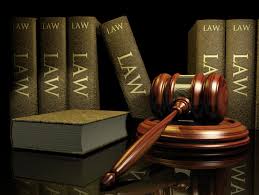People v Smith
NY Slip Op 04447
Decided on June 6, 2019
Contact an appellate lawyer today to appeal your wrongful conviction.
Issue:
‘Missing Witness’ Charge Warranted?
Whether the trial court erred in denying defendant Smith’s application for a missing witness charge, where the People did not call the only eye witness to the shooting aside from the victim herself.
Holding:
Lower Court Erred in Denying Charge as People Failed to Meet Burden
The Court of Appeals held that the trial court abused its discretion in denying the missing witness charge as Smith met the initial burden to make the missing witness charge and the People, in response, failed to meet their burden.
Facts:
Defendant Samuel J. Smith was charged with attempted murder in the second degree, assault in the first degree, and criminal use of a firearm in the first degree after he was identified as the victim’s shooter. Smith allegedly approached the woman in the street and shot at her several times, causing significant liver injuries and lung lacerations. The assailant also shot at the victim’s boyfriend, James Dees, who was walking with her at the time. Police found the victim lying facedown in a pool of blood in a driveway. In the hospital, she described the shooter as wearing a hooded sweatshirt and baseball cap.
Surveillance footage showed Smith in a hooded sweatshirt and baseball cap exit a vehicle in the vicinity of the shooting, and a witness who called 911 testified that he saw a man walking down the street remove and discard a sweatshirt in a location where it was later found by police. Additional recordings from a nearby convenience store corroborated testimonies from a customer and an employee that Smith tried to give them his baseball cap.
James Dees was initially on the People’s witness list but he never testified. Smith filed a missing witness charge, arguing that Dees was in the People’s direct control, he had seen the shooter first, and he had attempted to push the victim out of the way before fleeing. In response, the People contended that Dees’s testimony would have been cumulative to that of the victim. The trial court denied the defendant’s application without stating its rationale. The Appellate Division affirmed, holding that the one seeking a missing witness instruction “has the initial, prima facie burden of showing that the testimony of the uncalled witness would not be cumulative of the testimony already given.”
Analysis:
Conditions Warranting a ‘Missing Witness’ Jury Instruction
The ‘missing witness’ instruction allows a jury to draw an unfavorable inference when a party fails to call a witness who would normally be expected to support that party’s version of events (People v Savinon, 100 NY2d 192, 196 [2003]). The instruction “derives from the commonsense notion that the non production of evidence that would naturally have been produced by an honest and therefore fearless claimant permits the inference that its tenor is unfavorable to the party’s cause” (People v Gonzalez, 68 NY2d 424 [1986]). In Gonzalez, the Court set forth the conditions necessary to warrant a missing witness charge: 1) the witness’s knowledge must be material to the trial, 2) the witness must be expected to give noncumulative testimony favorable to the party against whom the charge is sought, and 3) the witness must be available to the party. (Gonzalez, 68 NY2d at 427).
Once the proponent has demonstrated the three required elements, the party opposing the charge can defeat the initial showing by accounting for the witness’s absence or demonstrating that the testimony would be cumulative to other evidence. If the party opposing the charge meets its burden by rebutting the prima facie showing, the proponent then retains the ultimate burden to show that the charge would be appropriate.
Burden-Shifting for Missing Witness Charge
Defendant Smith met his limited initial burden demonstrating entitlement to the missing witness charge by establishing that 1) Dees likely was knowledgeable about a material issue in the case—the identity of the man who shot the victim, and 2) he was the only other eye witness besides the victim, and 3) Dees was under the People’s control and was initially on the witness list.
The People were then required to rebut by establishing why the charge was inappropriate, to which they concluded that Dees’s response would be cumulative because “there is absolutely no indication that Dees would be able to provide anything that wasn’t provided by [the victim].” The Court of Appeals held that this argument was insufficient, and further, it was not supported by the record. Dees’s testimony would not have been “trivial or cumulative” as inconsistencies in the victim’s descriptions and what the victim was wearing made identification an issue of “sharp dispute…and the testimony of the only additional person who was present [during the shooting] might have made the difference” (People v Rodriguez, 38 NY2d 95, 101 [1975]). The Court noted that Dees called out to the driver of the car from which the shooter exited, indicating that he might have been familiar with someone involved in the events preceding the crime. Dees also saw the shooter before the victim and may have had a better basis for identification; his testimony may have added to or contradicted that of the victim. Because the People failed to rebut Smith’s prima facie showing of entitlement to a missing witness charge, the trial court abused its discretion by declining to give the charge. The Court of Appeals reversed the order of the Appellate Division and ordered a new trial.
